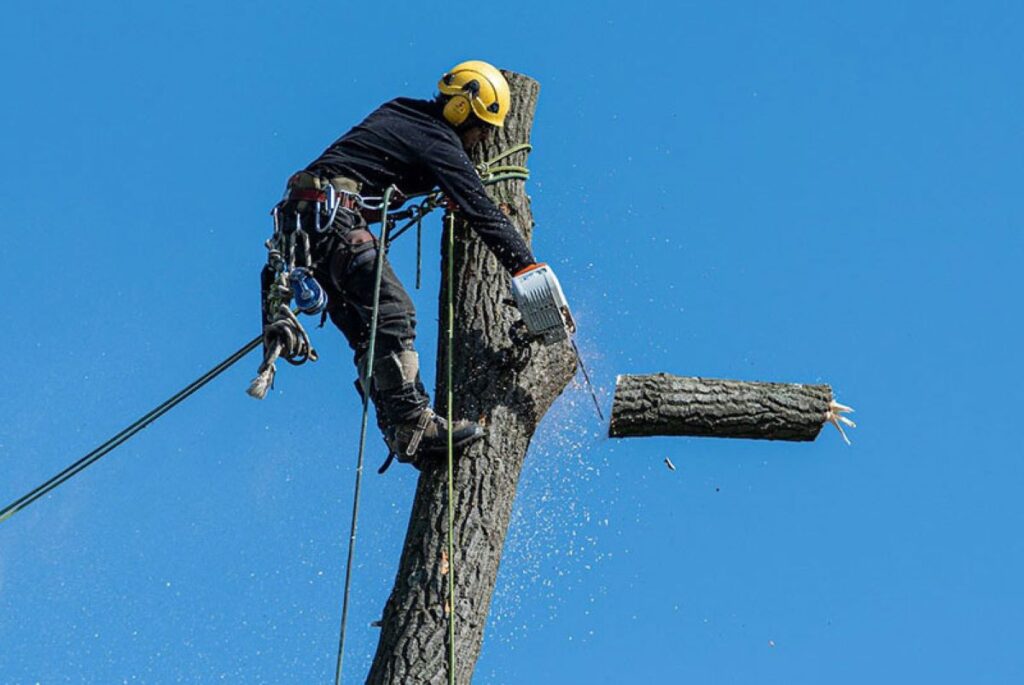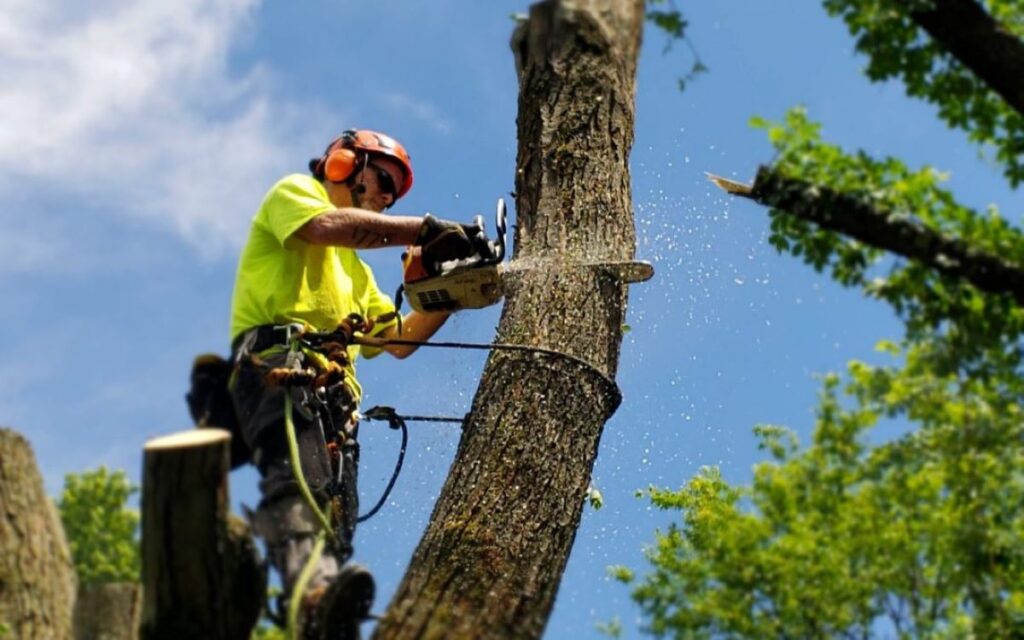Safety Tips from Experienced Sydney Tree Lopping Professionals
Why Is Safety Crucial in Tree Lopping?
Safety Tips from Experienced Sydney Tree Lopping Professionals begin with understanding that tree lopping involves significant risks to both workers and the surrounding environment. Working at heights with heavy equipment near power lines, buildings, and pedestrians demands rigorous safety protocols at every stage.
Tree lopping Sydney safety becomes even more critical in densely populated urban areas. Trees in residential neighborhoods often grow near homes, vehicles, and public spaces. A single miscalculation during cutting can result in property damage, personal injury, or worse. Experienced professionals recognize that each job site presents unique challenges requiring careful planning and execution.
The role of qualified arborists extends beyond technical skill. These experts bring decades of combined experience in assessing risks, implementing protective measures, and responding to unexpected situations. Their training enables them to identify hazards that untrained individuals might overlook.
Urban tree maintenance introduces specific complications absent in rural settings:
- Limited working space restricts equipment placement and escape routes
- Proximity to electrical infrastructure creates electrocution risks
- High foot traffic requires constant public safety management
- Overhanging branches threaten multiple properties simultaneously
Professional tree care providers understand these urban-specific challenges. They implement comprehensive safety systems that protect workers, residents, and property while maintaining Sydney’s valuable tree canopy. This commitment to safety distinguishes qualified professionals from unlicensed operators who may cut corners.
Why Should Tree Lopping Be Done by Qualified Arborists?
Qualified arborists in Sydney have the specialized training and certification needed to perform tree lopping safely and effectively. Trying to do tree work without the proper credentials puts both workers and property at serious risk, as untrained individuals don’t have the knowledge to identify structural weaknesses, assess tree health, or make cuts that won’t cause major failure.
Certified tree professionals reduce risk on every job by understanding tree biology, physics, and proper cutting techniques. Their expertise helps them predict how branches will fall, spot signs of disease or decay that could affect stability, and choose the right equipment for each situation. This knowledge leads to fewer accidents, less property damage, and better outcomes for tree health.
Expert tree lopping services in Sydney usually hire arborists with credentials from recognized organizations such as:
- AQF Level 3 in Arboriculture (minimum industry standard)
- Diploma of Arboriculture (AQF Level 5)
- Tree Risk Assessment Qualification (TRAQ)
- Certified Climbing Arborist designation
Experience levels among certified arborists in Sydney typically range from 10 to over 30 years in the field. This extensive hands-on experience, combined with formal qualifications, creates a safety-first approach that protects clients, workers, and the urban tree canopy. Insurance companies recognize this difference and often require proof of certification before covering tree work operations.
What Regulations Must Professionals Comply With During Tree Lopping?
Sydney council regulations require property owners to obtain permits before removing or significantly pruning certain trees, particularly those protected under local Tree Preservation Orders or Development Control Plans. Professional arborists navigate these Sydney council regulations by assessing whether proposed work requires approval, submitting applications on behalf of clients, and ensuring all activities remain within legal boundaries.
Australian Standards pruning guidelines, specifically AS 4373-2007 (Pruning of Amenity Trees), establish the technical framework for proper tree care. These standards dictate acceptable pruning methods, specify which cuts promote tree health, and outline practices that qualified arborists must follow. The standards prohibit harmful techniques like excessive crown reduction and mandate that cuts be made at appropriate locations to minimize disease risk and structural damage.
Safe work at height rules under Work Health and Safety regulations demand rigorous compliance when tree work occurs above ground level. Key requirements include:
- Use of certified fall protection systems and harnesses
- Regular inspection and maintenance of climbing equipment
- Implementation of rescue plans for emergencies
- Proper training documentation for all personnel working at elevation
Arborists must also maintain current insurance coverage, including public liability and workers’ compensation, to operate legally in Sydney. These regulatory layers create a comprehensive safety net that protects workers, property owners, and the urban forest itself.
How Do Professionals Assess Hazards Before Starting Tree Lopping?
Risk evaluation arborists conduct systematic pre-job safety checks before any cutting begins. This hazard assessment tree lopping process identifies immediate dangers and prevents accidents through careful site analysis.
Experienced professionals examine the work zone from multiple angles, documenting specific threats that could endanger workers or property. The assessment follows a structured approach:
1. Critical Infrastructure Checks
- Powerlines: receive priority attention—arborists maintain safe distances and coordinate with utility companies when lines run near branches.
- Rooflines and gutters: are mapped to prevent structural damage from falling limbs.
- Underground utilities: like water and gas lines are located before any equipment enters the site.
2. Public Safety Evaluation
Arborists walk the perimeter to identify how tree work might affect pedestrians and neighbors. Public footpaths directly beneath work zones require temporary closures or protective barriers. Properties adjacent to the tree receive special consideration—windows, vehicles, gardens, and outdoor structures are noted in the risk plan.
3. Environmental and Access Factors
The team evaluates branches blocking natural light or obstructing views, which often motivate the lopping request. These Safety Tips from Experienced Sydney Tree Lopping Professionals include checking ground stability for equipment placement, measuring clearance for aerial platforms, and identifying escape routes for workers if emergencies arise during the job.
In addition to these assessments, it’s also crucial to have a comprehensive debris management plan in place. This plan outlines how to handle debris resulting from tree lopping safely and efficiently, further ensuring the safety of both workers and the public during the operation.

What Safety Measures and Equipment Are Used to Minimize Risks During Tree Lopping?
Tree lopping safety equipment is essential for every professional operation in Sydney. Arborists wear comprehensive personal protective equipment including helmets with face shields, cut-resistant clothing, safety harnesses rated for height work, steel-capped boots, and specialized gloves designed for chainsaw operation. Eye protection and hearing protection are mandatory when operating power equipment.
Modern arborist tools have greatly improved safe cutting practices during tree lopping operations. Professionals use:
- Hydraulic chainsaws with anti-kickback features
- Pole saws for controlled branch removal at distance
- Wood chippers with emergency stop mechanisms
- Aerial work platforms (cherry pickers) for stable elevated access
- Rigging systems including pulleys, ropes, and lowering devices
Risk mitigation strategies focus on controlled descent techniques that prevent uncontrolled falling. Sydney professionals use sectional dismantling, where large branches are cut into manageable pieces and lowered using rope systems rather than allowed to free-fall. Rigging points are carefully selected in stable sections of the tree to distribute weight safely.
Ground crews maintain clear communication with climbers through hand signals and two-way radios, ensuring coordinated movements during critical cuts. Drop zones are clearly marked and monitored, with spotters positioned to redirect pedestrians away from active work areas. These systematic approaches make potentially dangerous operations predictable and manageable tasks. Check out more about the true tree removal cost Sydney homeowners face.
How Are Work Areas Controlled to Protect People and Property During Tree Lopping?
1. Controlled Work Zones
Controlled work zones establish physical boundaries that prevent unauthorized access to dangerous areas. Sydney arborists create these exclusion zones using high-visibility barriers, safety tape, and warning signage positioned at strategic points around the work site. The perimeter extends beyond the tree’s canopy to account for falling branches and debris trajectory.
2. Public Safety Measures
Public safety during lopping requires constant monitoring of foot traffic and nearby activities. Professional teams assign dedicated spotters who watch for approaching pedestrians, cyclists, or vehicles. These spotters communicate with the climbing arborist through radio systems, halting operations immediately when anyone enters the danger zone.
3. Exclusion Zones for Tree Work
Exclusion zones for tree work vary in size depending on the tree’s height, lean, and surrounding structures. Arborists calculate drop zones by assessing branch weight, wind conditions, and potential bounce patterns. Traffic controllers may be deployed on busy streets to redirect vehicles away from falling debris paths.
4. Property Protection Measures
Property protection measures include:
- Placing protective mats over driveways and lawns to prevent damage from heavy equipment
- Installing temporary fencing around gardens, pools, and outdoor furniture
- Covering nearby vehicles with specialized tarps designed to absorb impact
- Coordinating with property owners to secure pets indoors during operations
5. Precautions in Residential Areas
Residential areas require additional precautions, with arborists notifying neighbors 24-48 hours before commencing work. This advance warning allows residents to move vehicles, secure outdoor items, and plan alternative access routes if pathways become temporarily blocked.
Other Resources : Guide to managing the risks of tree work
When Are Emergency Tree Services Necessary, and How Are They Handled Safely?
Emergency tree services Sydney become critical when trees pose immediate threats to life or property. Severe storms, flooding events, and unexpected structural failures create situations where trees or large branches collapse onto buildings, vehicles, or power lines. These scenarios demand instant professional response to prevent injuries and further damage.
Sydney’s experienced arborists maintain 24/7 availability for urgent tree removal safety operations. When called to emergency sites, professionals first conduct rapid risk assessments to identify immediate dangers. They prioritize hazards in this order:
- Trees touching or threatening power lines
- Structures compromised by fallen limbs
- Blocked emergency access routes
- Unstable trees at risk of further collapse
Storm damage response protocols require enhanced safety measures beyond standard tree work. Professionals work closely with emergency services and utility companies to coordinate safe access. They establish wider exclusion zones around unstable trees, accounting for unpredictable movement during cutting operations.
Arborists use specialized rigging techniques during urgent jobs to control the descent of damaged sections. Night work requires additional lighting setups to maintain visibility standards. Teams never rush procedures despite time pressure—Safety Tips from Experienced Sydney Tree Lopping Professionals emphasize that methodical approaches prevent accidents even during crisis situations. Weather monitoring continues throughout emergency operations, with work suspended if conditions deteriorate further.

Why Is It Important for Professionals to Support Risk Management Through Documentation in Tree Lopping Projects?
Risk management reports arborists create serve as essential protection for both service providers and property owners. Professional documentation establishes a clear record of the work performed, hazards identified, and safety measures implemented during tree lopping operations. These detailed reports become invaluable when disputes arise or when clients need to demonstrate due diligence to regulatory bodies.
Insurance documentation tree work requires extends beyond simple invoices. Experienced Sydney arborists provide comprehensive reports that include:
- Pre-work site assessments with photographic evidence
- Detailed descriptions of the tree’s condition before intervention
- Specific techniques and equipment used during the operation
- Post-work photographs showing completed tasks
- Recommendations for ongoing tree maintenance
When property damage occurs from tree-related incidents, these records become critical evidence for insurance claims. Insurers often require proof that qualified professionals performed the work according to industry standards. Without proper documentation, claims may be denied or significantly delayed.
Professional arborists understand that thorough record-keeping protects their clients’ investments. These reports also demonstrate compliance with Australian Standards and local council regulations, which can prove essential during property transactions or legal proceedings. The documentation creates a traceable history of tree care that supports informed decision-making for future maintenance needs.
Conclusion
Safe tree lopping Sydney requires expertise that only qualified professionals can provide. The safety tips from experienced Sydney tree lopping professionals outlined in this guide show how certified arborists protect people, property, and trees at the same time. Their comprehensive approach— which includes hazard assessment, regulatory compliance, specialized equipment use, and thorough documentation—creates a framework where urban tree maintenance can occur without compromising safety standards.
Professional arborist benefits go beyond immediate tree care. These experts have decades of experience, understand local council requirements, and use risk mitigation strategies that homeowners cannot replicate. When Sydney residents hire qualified arborists for their tree work, they are investing in proven safety protocols that maintain both their property’s appearance and the community’s wellbeing.

